Ambulatory blood pressure monitoring
24 and 48 hour blood pressure monitoring
Our blood pressure monitoring service is a non-invasive way of taking recordings over a prolonged period of time
What is 24-hour ambulatory blood pressure monitoring (ABPM)?
Ambulatory blood pressure monitoring - or ABPM - is a non-invasive way to record your blood pressure during a 24-hour or 48-hour period, without having to visit a hospital or GP surgery. It’s a good way to monitor your blood pressure, because it means you can carry on with your normal activities as usual.
Your blood pressure readings will be taken approximately every twenty minutes over a 24-hour (or 48-hour) period, using a cuff on your arm which is linked to a portable monitor worn on your waist.
This consistent monitoring will give your doctor a detailed picture of how your blood pressure changes over the course of a day or two, and will help them to work out the most effective medication for you if you have high blood pressure.
How is the blood pressure monitor fitted?
During the monitoring period, the cuff will inflate automatically every twenty minutes throughout the day - and hourly after 11pm - to take a blood pressure reading. You will need to keep it on all the time during the 24-hour or 48-hour period you are being monitored. It will also take an extra reading at a randomly chosen time, so that the results are not affected by your anticipation of the reading.
Some people find it slightly uncomfortable when the cuff inflates, as it’s quite tight. However, as long as you keep your arm relaxed and a reading is successfully recorded, it only lasts for a few seconds. You may find it helps to rest your arm on a cushion during each reading.
While you sleep, you can put the monitor under a pillow or on the bed. During the monitoring period, you should do everything you'd normally do, except for swimming or having a bath or shower.
Why do I need to get a 24-hour blood pressure monitor test?
Age isn’t the only factor that affects blood pressure. Other factors such as diet, fitness level, stress and anxiety, and medication for other conditions can all affect blood pressure. Your doctor may recommend monitoring your blood pressure for any of these reasons, particularly if you have had a high blood pressure reading in the surgery. If you have high blood pressure, you may be prescribed medication to lower it.
Hypertension can also be caused by a condition known as White Coat Syndrome (also known as White Coat Hypertension and the White Coat Effect). This is when simply being in a clinical setting - like a hospital or doctor’s surgery - makes you feel anxious, causing your blood pressure to rise. White Coat Syndrome affects one in eight people, and can lead to routine procedures (such as surgery for other conditions) being postponed or cancelled, because high blood pressure indicates a potential risk. For this reason, your doctor may recommend ambulatory blood pressure monitoring to rule out whether your high blood pressure may be caused by White Coat Syndrome.
A similar condition - called Masked Hypertension - has the opposite effect: some patients will have a normal blood pressure reading at the doctor's surgery, but their blood pressure is high when they measure it at home. It's hard to know how common Masked Hypertension is, but research suggests it might affect as many as one in ten people. Since doctors don't usually ask people to measure their own blood pressure at home if it's normal in the GP surgery, the only reason we can be sure of the phenomenon is from results of ambulatory blood pressure monitoring.
Interpreting your blood pressure results
The arm cuff is pumped up to restrict the blood flow in your arm and when the pressure is slowly released, the doctor uses the stethoscope to listen to your pulse (digital devices use sensors to detect vibrations in your arteries). As the blood flow starts to return to your arm, the pressure is recorded at two different points and these measurements are used to give your blood pressure reading.
Your blood pressure is measured in millimetres of mercury (mmHg) and is given as two figures:
Systolic pressure – the pressure when your heart pushes blood out
Diastolic pressure – the pressure when your heart rests between beats
For example, you might see or hear your blood pressure described as "140 over 90" or 140/90mmHg, meaning you have a systolic pressure of 140mmHg and a diastolic pressure of 90mmHg.
As a general guide:
Normal blood pressure is considered to be between 90/60mmHg and 120/80mmHg
Low blood pressure is considered to be 90/60mmHg or lower
High blood pressure is considered to be 140/90mmHg or higher
A blood pressure reading between 120/80mmHg and 140/90mmHg might mean you're at risk of developing high blood pressure if you don't take steps to reduce it.
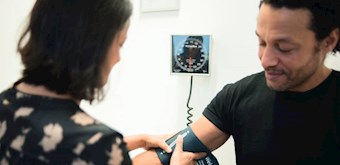


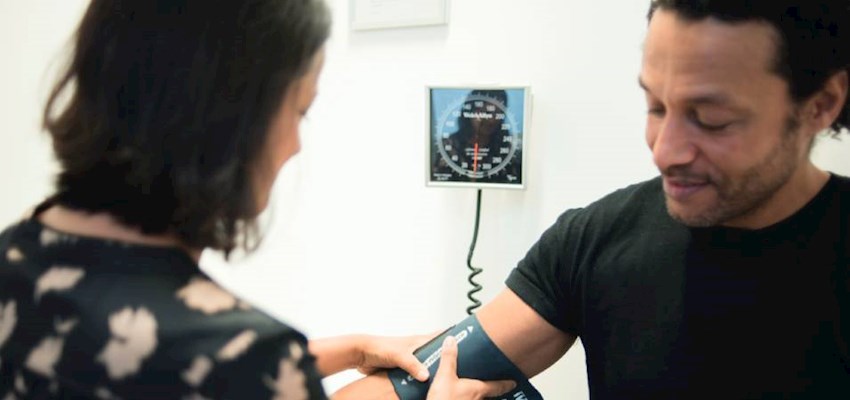
How can I control my blood pressure?
However, blood pressure can also be too low. This is called hypotension.

Low blood pressure

What symptoms suggest I have low blood pressure?

Often, people with low blood pressure have no symptoms at all, however some people experience symptoms including:
- Lightheadedness or dizziness
- Feeling sick
- Blurred vision
- Feeling weak
- Confusion
- Fainting

What are the causes of low blood pressure?

There are many possible causes of low blood pressure. These include:
Family history: if you have a family history of low blood pressure, you are at higher risk
Age: some people develop low blood pressure as they get older
Diet: Lack of nutrients in your diet, or dehydration
Certain medical conditions: such as diabetes
Certain medications: such as beta blockers and and nitroglycerin, which are used to treat heart disease
Pregnancy
Sometimes, there is no underlying cause and people who are otherwise healthy have low blood pressure.

What can I do to alleviate symptoms?

If you experience any of the symptoms associated with low blood pressure, the following tips might help:
- Try not to sit or stand for long periods, and when you change position, move slowly - especially from sitting to standing
- Take care when getting out of bed and get up slowly
- Raise the head of your bed by about 15cm (6 inches) with bricks or heavy books
- Try to eat small, frequent meals. You may find that lying down or sitting still for a while after eating will also help
- Lower your alcohol consumption and avoid caffeinated drinks at night, but increase the amount of water you drink

High blood pressure

What symptoms suggest I have high blood pressure?

High blood pressure - or hypertension - has fewer noticeable symptoms but can lead to serious conditions such as heart attacks and strokes.
In some cases, high blood pressure has underlying causes, including:
Family history: if you have a family history of high blood pressure, you are at higher risk
Age: people over the age of 65 are more likely to develop high blood pressure
Ethnicity: people of black Caribbean or black African descent are more likely to have high blood pressure
Certain medical conditions: such as diabetes and kidney disease
Certain medications: such as the contraceptive pill, steroids, some anti-depressants and some over-the counter cold remedies

What factors can cause high blood pressure?

Most of the risk factors for high blood pressure are lifestyle related. These include:
- Being overweight or obese
- Eating a diet which is high in salt and low in fruit and vegetables
- Not doing enough exercise
- Drinking too much alcohol, coffee or other caffeine-based drinks
- Smoking
- Not getting enough sleep

What can I do to reduce my blood pressure?

Making changes to your lifestyle can help reduce your blood pressure. These include:
- Reducing the amount of salt you eat and eating a healthy diet
- Cutting down on alcohol consumption
- Losing weight
- Getting regular exercise
- Reducing the amount of caffeine you drink
- Giving up smoking
If your blood pressure remains high even after making healthy changes to your lifestyle, your doctor may prescribe medication to lower it.
What are the next steps?
After you have completed a 24-hour or 48-hour ABPM period, your doctor will advise you about whether further treatment is required. If you have high blood pressure, they may recommend making healthy changes to your lifestyle, and you may also need medication.
You may also need to come back for further tests.

FAQs about blood pressure monitoring

Are there any disadvantages to blood pressure testing?

While there may be some slight discomfort caused by the inflation of the cuff when testing your blood pressure, it is otherwise a completely safe and painless test.

Are there any alternatives to ambulatory blood pressure monitoring?

Yes. Not every patient with suspected high blood pressure will need 24-hour ABPM. Another option is home blood pressure monitoring, in which you test your blood pressure at home using your own digital blood pressure monitor.
In some cases, this can give a more accurate reflection of your blood pressure, as it helps to reduce the feelings of anxiety you may have at a GP surgery or hospital. What’s more, it can also allow you to monitor your condition more easily in the long term.
Your care team will be happy to advise you on the range of validated blood pressure monitors you can buy.

How much does blood pressure monitoring cost?

At HCA UK, the cost of 24-hour blood pressure monitoring is £651, which is payable on the day you pick up the equipment.
How do I access Cardiac Care at HCA UK?
Our cardiac outpatient clinics
Throughout the HCA UK network, we offer clinics that are able to provide a range of cardiac testing on an outpatient basis.
Our cardiac physiology team will welcome you and talk you through what will happen during the test. A number of tests are available with the most common as follows:
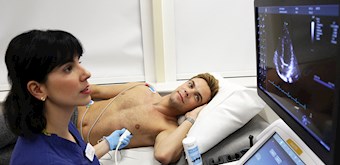

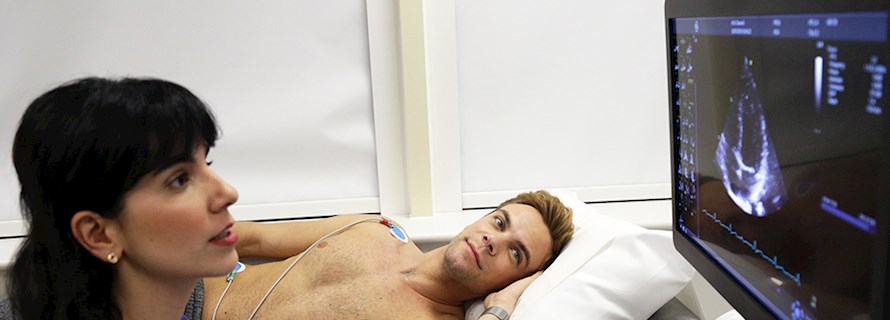
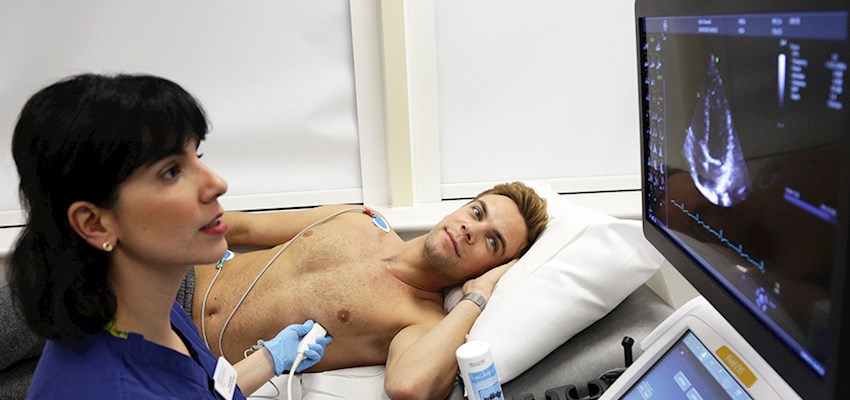
Our locations
For cardiac diagnostic tests, including ambulatory blood pressure monitoring, we provide facilities across our network of hospitals, outpatient centres and specialist clinics.
Book an appointment
We're happy to help you make an appointment with one of our experienced cardiologists.
Call us today
020 7079 4344